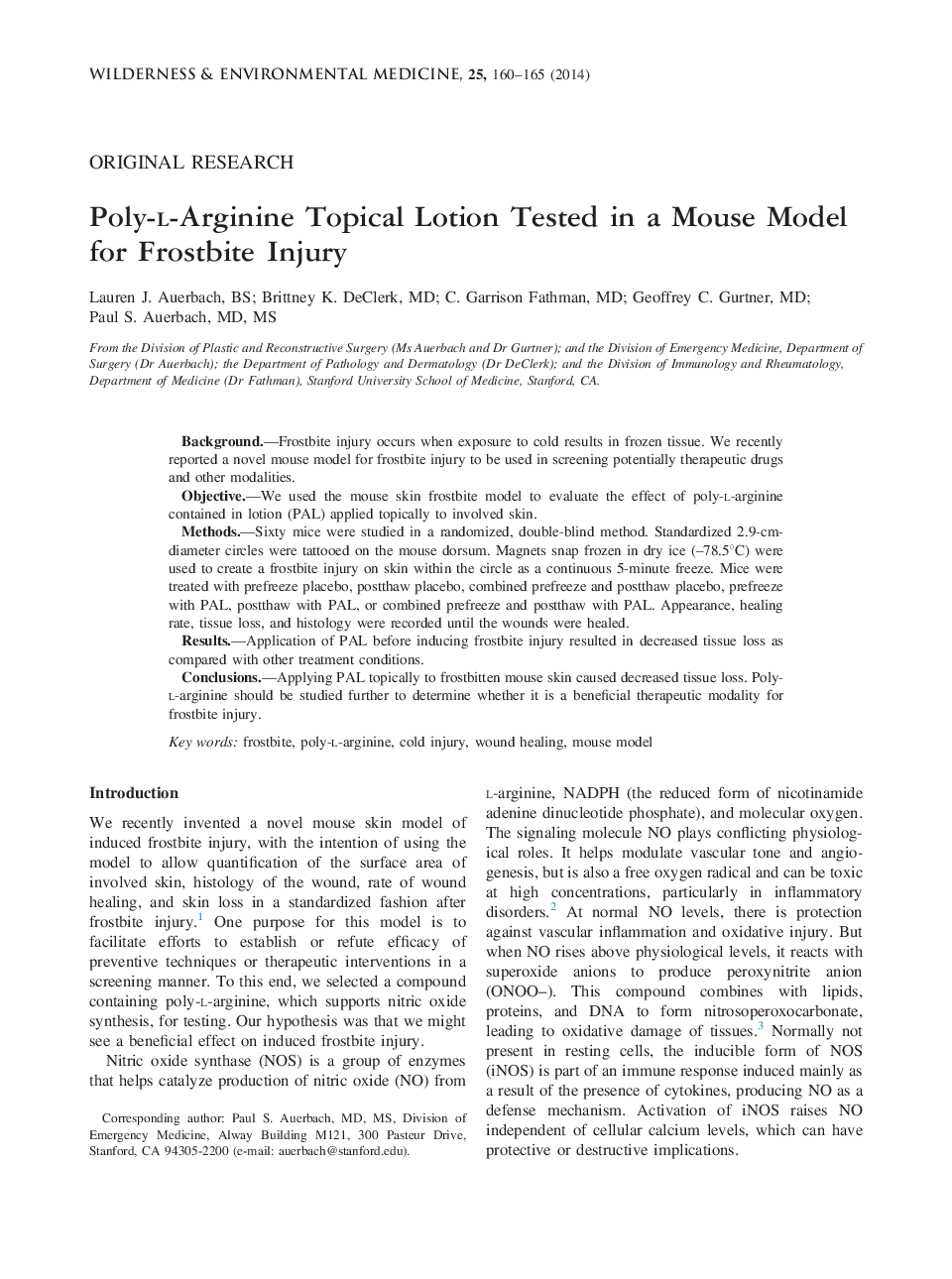| Article ID | Journal | Published Year | Pages | File Type |
|---|---|---|---|---|
| 2614107 | Wilderness & Environmental Medicine | 2014 | 6 Pages |
BackgroundFrostbite injury occurs when exposure to cold results in frozen tissue. We recently reported a novel mouse model for frostbite injury to be used in screening potentially therapeutic drugs and other modalities.ObjectiveWe used the mouse skin frostbite model to evaluate the effect of poly-l-arginine contained in lotion (PAL) applied topically to involved skin.MethodsSixty mice were studied in a randomized, double-blind method. Standardized 2.9-cm-diameter circles were tattooed on the mouse dorsum. Magnets snap frozen in dry ice (–78.5°C) were used to create a frostbite injury on skin within the circle as a continuous 5-minute freeze. Mice were treated with prefreeze placebo, postthaw placebo, combined prefreeze and postthaw placebo, prefreeze with PAL, postthaw with PAL, or combined prefreeze and postthaw with PAL. Appearance, healing rate, tissue loss, and histology were recorded until the wounds were healed.ResultsApplication of PAL before inducing frostbite injury resulted in decreased tissue loss as compared with other treatment conditions.ConclusionsApplying PAL topically to frostbitten mouse skin caused decreased tissue loss. Poly-l-arginine should be studied further to determine whether it is a beneficial therapeutic modality for frostbite injury.
